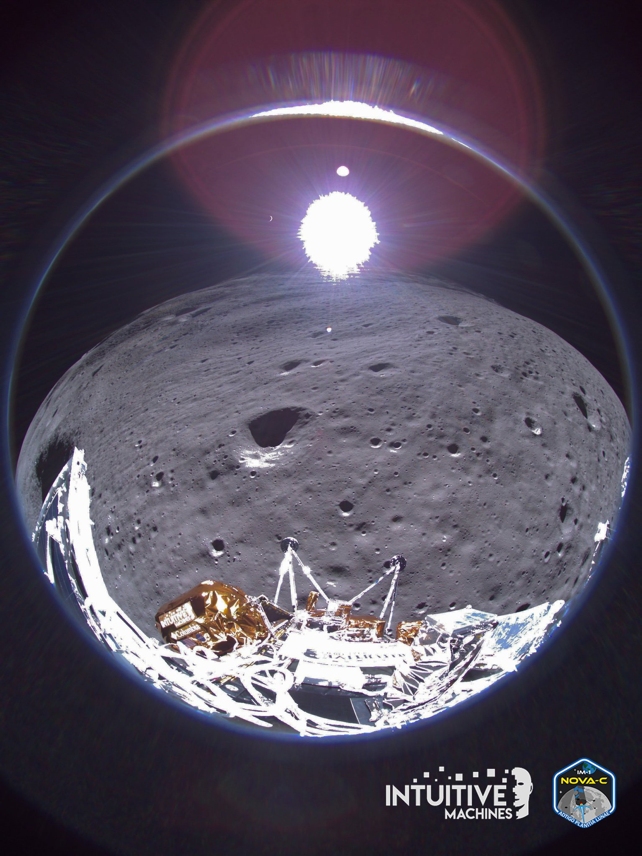A mere one week after stumbling to the lunar surface in its historic journey, the Moon lander Odysseus has officially ended its brief mission – at least, for now.
Mission control has shut down the lander in preparation of the long lunar night, but not before receiving a final image of a cratered landscape and dark sky featuring a tiny crescent Earth in the blinding glare of the Sun.
Before its power was depleted, Odysseus completed a fitting farewell transmission. Received today, this image from February 22nd showcases the crescent Earth in the backdrop, a subtle reminder of humanity’s presence in the universe.
— Intuitive Machines (@Int_Machines) February 29, 2024
Goodnight, Odie. We hope to hear from you… pic.twitter.com/RwOWsH1TSz
Half a century has passed since the last of the Apollo missions left the lunar surface, making the Odysseus mission a historic return for the US.
Houston-based company Intuitive Machines was endorsed and utilized by NASA as part of its Commercial Lunar Payload Services program to carry technology that would collect critical information to assist in transporting astronauts to the Moon.
It's been hoped that making use of commercial ventures could allow NASA to focus its time and resources on the scientific side of space exploration.
A rapid descent and a single neglected locking mechanism came close to ending the mission in complete obliteration as the affectionately nick-named 'Odie' approached the Moon at speed without its range-finding lasers operating.
Flight controllers made use of a separate experimental navigational system being carried on board to guide the craft in to its target site close to the Moon's south pole.

Though the lander avoided a devastating crash landing, its touchdown was far from perfect, with an unfortunately-positioned obstacle catching one of Odysseus's six legs in the final seconds, sending the telephone booth-sized vehicle toppling onto its side.
With its solar panels in shadow and night creeping over the landing site, it's unlikely the lander will find the energy to reawaken when lunar dawn breaks in several weeks, though Intuitive Machines CEO and co-founder Steve Altemus isn't quite ready to give up on the mission yet.
"I think what we're going to do is kind of tuck Odie in for the cold night of the Moon and see if we can't wake him up here when we get a solar noon here in about three weeks," Altemus said at a press conference on 28 February, days before shut down.
Such an awakening isn't without recent precedent as Japan's SLIM spacecraft sparked back to life last week after a similarly awkward landing.
While Odie might not have completed its bucket list, it still managed to transmit a few images of its surrounds. With its last, parting shot featuring a distant Earth twinkling in the background, it's hard not to feel some kind of empathy for not just the lander, but the team who worked so hard to send it there.
